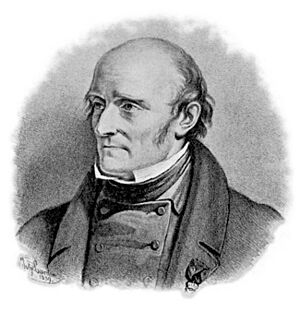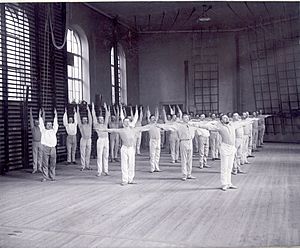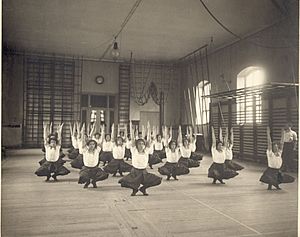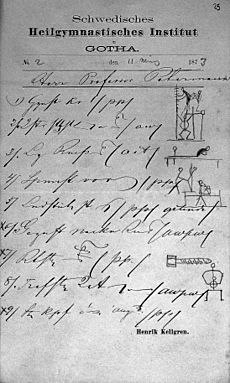Pehr Henrik Ling facts for kids

Pehr Henrik Ling (born November 15, 1776, in Södra Ljunga, Sweden – died May 3, 1839, in Stockholm) was a Swedish teacher. He was a pioneer in teaching physical education in Sweden. Many people know Ling as the person who started Swedish massage.
Contents
Early Life and Education
Pehr Henrik Ling was born in 1776 in a place called Södra Ljunga, in Småland, Sweden. His father, Lars Peter Ling, was a minister. Ling came from a family with a long history, including his great-great-grandfather, Olof Rudbeck, who was a famous Swedish scientist. Rudbeck discovered the human lymphatic system, which is part of our body's defense system.
Ling went to school in Växjö and then studied theology at Lund University and Uppsala University. He finished his studies in 1799. For the next three years, he worked as a tutor, helping different families with their children's education.
Travels and Discoveries
In 1800, Ling left Sweden and traveled for seven years. He visited countries like Germany, France, and England. He also studied different languages. During his travels, Ling learned about fencing. Fencing is a sport where you use swords. He noticed that practicing fencing helped with the pain in his arm, which was caused by a condition called gout (a type of joint pain).
This experience made Ling realize how important physical activity was for health. He also studied famous writers like Johann Wolfgang von Goethe and Friedrich Schiller. He even wrote his own poems in several languages. After facing money problems and dealing with rheumatism (another type of joint pain), he returned to Sweden.
Developing Gymnastics
When Ling returned to Sweden, he started exercising every day, including fencing. In 1805, he became a fencing teacher at Lund University. Because his daily exercises had made him feel much better, Ling wanted to help others. He saw that these physical techniques could improve health in many ways.
To understand the human body better, he studied anatomy (how the body is built) and physiology (how the body works). He even learned what doctors learn. Then, he created a system of gymnastics and exercises. This system had four main parts:
- Pedagogical: For teaching and education.
- Medical: For health and healing.
- Military: For training soldiers.
- Aesthetic: For beauty and grace of movement.
Ling also invented special equipment for physical education. These included the box horse, wall bars, and beams. He is also known for developing calisthenics, which are exercises that use your own body weight.
In 1813, Ling convinced the Swedish government to help him. He founded the Royal Central Gymnastics Institute in Stockholm. This school was created to train gymnastics instructors, and Ling became its first principal.
Even though some doctors were against his ideas at first, Ling's methods became well-known. In 1831, he became a member of the Swedish General Medical Association. This showed that his work was respected by medical professionals. He also became a member of the Swedish Academy in 1835.
Ling's Legacy
Pehr Henrik Ling passed away in 1839 from tuberculosis. He asked three of his students to continue his work: Lars Gabriel Branting, August Georgii, and his son, Hjalmar Ling. These three, along with Major Thure Brandt, who focused on exercises for women, are seen as the founders of Swedish medical gymnastics.
While Ling is often called the "father of Swedish massage", the specific techniques like effleurage (long strokes) and petrissage (kneading muscles) were actually developed by Johann Georg Mezger later on. Ling's system focused more on combining physical training with knowledge of how the body works. He was one of the first to create and share such a system using modern scientific understanding.
Ling's ideas about medical gymnastics also influenced other schools and systems. His work even shaped how modern yoga as exercise developed in Western countries.
In 1939 and 1949, Sweden held big gymnastics competitions named after Ling, called "The Lingiad."
Honors and Awards
Ling was recognized as an Honorary Fellow in Memoriam by the National Academy of Kinesiology.
See also
 In Spanish: Pehr Henrik Ling para niños
In Spanish: Pehr Henrik Ling para niños





